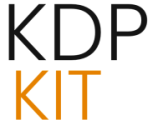Keurig Dr Pepper’s Strategic Coup: Acquiring Ghost and Realigning the Energy Drink Future

The beverage industry in the mid-2020s is defined by a relentless pivot away from legacy carbonated soft drinks toward functional, lifestyle-oriented consumption. In a move that crystallized this industry shift, Keurig Dr Pepper (KDP) announced on October 24, 2024, its definitive agreement to acquire a controlling stake in the disruptive sports nutrition and energy drink maker, Ghost Lifestyle LLC and Ghost Beverages LLC (collectively “GHOST”). This acquisition is not merely an addition to KDP’s vast portfolio; it represents a calculated acceleration of its strategy to capture significant value in the fastest-growing sector of the beverage landscape.
Ghost’s Ascendance in the Sports Nutrition and Energy Sector
The story of Ghost is fundamentally one of disruptive market penetration, leveraging modern marketing techniques to build a powerhouse brand from the ground up. Their success serves as a prime example of how authenticity can translate directly into substantial shareholder value when paired with the right product.
Foundational Pillars: Brand Identity and Rapid Expansion
Ghost Energy established itself not merely as another high-caffeine beverage but as an extension of a comprehensive wellness and fitness lifestyle, heavily utilizing social media influencers and an almost exclusive focus on high-impact flavor profiles derived from popular culture licensing agreements. This strategy fostered an intense level of brand advocacy. Internally, the brand’s net sales performance was a staggering indicator of its market appeal, having more than quadrupled over the three-year period immediately preceding the acquisition announcement. This growth far outpaced many established competitors in the crowded energy drink aisle. Ghost Energy quickly ascended the ranks to become recognized as one of the absolute fastest-growing SKUs in the entire energy category, a feat achieved through consistent product innovation that kept the consumer base continually engaged and eager for the next drop. This rapid scaling, however, inherently introduced strains on their existing infrastructure, creating the perfect window for a partner like KDP to step in.
Beyond the Can: Diversification into Adjacent Wellness Products
A critical element of Ghost’s valuation was its presence extending beyond the ready-to-drink energy category. The parent company, Ghost Lifestyle, had successfully diversified its portfolio to encompass several high-potential adjacencies within the broader sports nutrition sphere. This included a robust line of protein and performance supplement powders, tapping directly into the committed fitness enthusiast demographic. Furthermore, the brand demonstrated a keen ability to forge high-profile, cross-category collaborations, most notably entering the functional food space through a partnership with General Mills to launch a line of high-protein breakfast cereals. The cereal line, which debuted in April 2024, included Peanut Butter (18 grams of protein) and Marshmallow varieties (17 grams of protein, including official Lucky Charms marshmallows). This multi-pronged approach proved that the Ghost brand equity was not singularly dependent on the energy drink segment alone. For KDP, this diversification meant the acquisition provided an immediate foothold in adjacent, high-margin wellness categories, effectively allowing them to service multiple distinct consumer need states with a single, powerful brand umbrella, significantly enhancing the strategic density of their overall market offering.
Keurig Dr Pepper’s Portfolio Reimagining and Category Acceleration Strategy
KDP’s acquisition of Ghost is a loud declaration of intent, signaling a significant acceleration of its strategy to pivot its portfolio away from legacy carbonated soft drinks toward growth-oriented, consumer-preferred beverages, a theme that dominated beverage industry coverage leading into 2025.
Addressing Evolving Consumer Preferences in the Beverage Landscape
The modern American consumer, particularly the younger demographic, has shown a sustained preference shift away from traditional sugary sodas and toward functional beverages that offer specific benefits—be it energy, hydration, or enhanced wellness. KDP recognized that while its core brands remain foundational, future topline growth would be dictated by success in these burgeoning sectors. The energy drink space, valued in the tens of billions, has been a hotbed for mergers and acquisitions, with competitors making massive plays for market share. By integrating Ghost, KDP positions itself to capture a larger slice of this rapidly expanding pie, ensuring their offerings are aligned with where consumer consumer dollars are increasingly being spent, a direct reflection of their evolving “category choice” philosophy within their corporate planning. This move allows KDP to directly engage the consumer seeking a “lifestyle” product, a space where many legacy players struggle to gain traction authentically.
Synergistic Value Proposition Across KDP’s Established Channels
The synergy extends far beyond simply adding another SKU to the manifest. KDP’s existing portfolio already included other energy brands, such as Venom Energy, and a significant minority stake in Nutrabolt, the producer of C4 Energy drinks. By adding Ghost, KDP now possesses a collection of powerful energy brands that can be strategically targeted against different consumption occasions: performance-focused, lifestyle-driven, or value-oriented. This suite of assets allows KDP to dominate shelf space and effectively block competitive positioning across the entire energy drink occasion matrix. Furthermore, the operational integration promises significant scale benefits. The ability to leverage KDP’s massive sales force and existing customer relationships for Ghost, while simultaneously channeling Ghost’s unique consumer insights back into KDP’s broader product development pipeline, creates a powerful, self-reinforcing cycle of market intelligence and execution efficiency.
The Phased Acquisition Structure: A Roadmap to Full Ownership
The structure of the transaction—a majority purchase now followed by a minority buy-in later—is a sophisticated mechanism used to de-risk large-scale acquisitions while ensuring continued alignment with the entrepreneurial spirit of the acquired company.
The Initial Equity Infusion and Control Transfer
The immediate purchase of the sixty percent controlling interest provided KDP with operational oversight and the ability to consolidate Ghost’s financial results into their own statements immediately upon closing. The initial cash investment for this stake was approximately $990 million. KDP expected this move to be neutral to moderately accretive to its adjusted earnings per share (EPS) beginning in 2025. This upfront control is paramount; it allows KDP to immediately begin the complex process of integrating Ghost’s supply chain and distribution strategy, a move that requires immediate executive authority. By securing control first, KDP gains the necessary leverage to implement its long-term vision for the brand’s logistical future without being hampered by minority shareholder vetoes on crucial operational changes, such as the planned distribution overhaul.
The 2028 Contingency: Finalizing the Purchase at a Performance-Based Metric
The commitment to acquire the remaining forty percent stake in the year two thousand and twenty-eight adds a layer of performance-based accountability to the entire deal. The valuation for this final tranche is not a fixed number; rather, it is tied to a pre-negotiated valuation scale that will specifically reflect Ghost’s financial performance in the year two thousand and twenty-seven. This structure serves multiple purposes. Firstly, it substantially mitigates the risk of overpaying in the current market by benchmarking the final price against future results. Secondly, it acts as a powerful retention and performance incentive for the co-founders and the existing Ghost management team, ensuring their focus remains intently on growth and operational excellence for the next several years, aligning their personal financial success directly with the success of the brand under KDP’s stewardship. This forward-looking performance trigger is a hallmark of high-value, modern M&A strategy in the consumer packaged goods space.
Distribution Overhaul: Integrating Ghost into KDP’s Logistic Powerhouse
Perhaps the most tangible and logistically complex element of the acquisition is the planned migration of Ghost’s distribution network to KDP’s proprietary system, a move that will fundamentally reshape how the brand reaches the consumer.
The Planned Transition to the Direct Store Delivery System
KDP has explicitly stated its intention to invest substantially—up to two hundred and fifty million dollars—beginning in the middle of 2025 to facilitate the transition of Ghost Energy’s existing, varied distribution agreements. The ultimate goal is to move Ghost entirely onto KDP’s expansive Direct Store Delivery (DSD) platform. KDP’s DSD network is one of the company’s most valuable assets, offering unparalleled reach, merchandising control, and direct contact with retailers across grocery, convenience, and mass merchandise channels. Full integration into this system is anticipated to unlock massive efficiencies, reduce handling costs, improve on-shelf presence, and ensure superior product freshness and inventory management, all critical factors in the high-velocity energy drink category where out-of-stocks can mean instant lost revenue to a competitor.
Anticipated Initial Logistical Hurdles and Long-Term Efficiencies
While the long-term benefits are clear, the execution of such a sweeping distribution transition in the middle of a fiscal year is never without its challenges. Industry analysts anticipate that the initial phase, commencing in mid-2025, will introduce certain friction points. These could include the necessary realignment of broker relationships, potential short-term supply chain disruptions as production volumes are optimized for the new network, and the inevitable complexities of onboarding thousands of new delivery points onto a new routing and inventory management architecture. However, KDP’s track record with integrating other brands onto its DSD platform provides a degree of confidence. The expectation is that, despite these initial growing pains, the established security and scale of KDP’s infrastructure will ultimately streamline operations, providing a secure and powerful launchpad for Ghost’s next phase of national expansion, far beyond what its prior distribution partners could offer.
Leadership Continuity and Organizational Integration within the KDP Ecosystem
A successful acquisition often hinges not just on the brand or the financials, but on the retention of the creative and strategic minds that built the brand’s initial success. KDP appears to have recognized this imperative in its dealings with the Ghost founders.
The Role of Ghost’s Founding Visionaries Post-Acquisition
Co-founders Dan Lourenco and Ryan Hughes are integral to the Ghost narrative. Their commitment to staying on board following the transaction was a significant positive signal to the consumer base and the wider market. They are not being sidelined into purely advisory roles; instead, they are set to continue leading the Ghost operations. This continuity is vital for maintaining the brand’s authenticity and its “challenger mindset,” as Lourenco himself noted when expressing excitement about the partnership. KDP understands that attempting to impose a traditional corporate structure onto a disruptive brand too quickly can extinguish the very innovative spark that made the acquisition attractive in the first place. Their continued stewardship ensures that product development, flavor innovation, and consumer engagement remain aligned with the brand’s DNA.
Placement within KDP’s Operational Structure: The U.S. Refreshment Beverages Segment
Organizationally, Ghost will be situated within KDP’s existing U.S. Refreshment Beverages segment. This placement strategically groups Ghost alongside other key non-carbonated and growth-oriented beverage brands, allowing for shared best practices in sales execution, marketing collaboration, and administrative overhead. This segment represented a substantial portion of KDP’s overall business in the preceding years, indicating that Ghost will be integrated into a division already accustomed to managing a diverse, high-volume portfolio. Operating within this established framework, while retaining a degree of operational autonomy led by the founders, aims to provide the best of both worlds: the protective shield and resource depth of a major corporation coupled with the agility and cultural relevance of an independent upstart, allowing for maximum scaling potential without immediate cultural assimilation into the slower-moving legacy structures.
Sectoral Benchmarking: The Competitive Dynamics of the Energy Drink Market
The KDP-Ghost deal must be viewed through the lens of the intensely competitive and high-stakes energy drink sector, which has seen significant capital expenditure from nearly every major beverage player in recent years as they vie for consumer attention and market share.
Comparative M&A Activity: Lessons from Industry Peers
The broader industry context underscores the strategic importance of KDP’s move. PepsiCo, for instance, had previously made monumental investments in the space, securing an ownership stake in Celsius Holdings and executing the multi-billion dollar acquisition of Rockstar Energy. Monster Beverage, a category titan, continued its aggressive market defense, including its strategic acquisition of Bang out of bankruptcy proceedings. KDP’s entry with Ghost—coupled with its earlier, smaller strategic investments in brands like A Shoc (which KDP was reportedly phasing out distribution of as the Ghost deal finalized) and its significant equity stake in Nutrabolt (C4 Energy)—demonstrates a calculated, multi-pronged approach to establishing dominance. These recent transactions highlight that access to the fastest-growing parts of the beverage market is now a mandatory competitive feature, not an optional add-on, justifying the high multiples KDP agreed to for Ghost.
KDP’s Evolving Energy Portfolio: Complementary Brands and Strategic Gaps Filled
The acquisition immediately elevates KDP’s standing in the energy drink category, offering a portfolio that blankets the key consumer motivations. While the stake in Nutrabolt brings in C4, a brand that leverages licensed intellectual property (IP) for broad appeal and has achieved success as a top-four seller in the category, Ghost fills the critical “lifestyle” and “transparency” gap. Venom Energy, another KDP-owned brand, addresses other specific performance needs. The combined portfolio is now structured to aggressively compete against Red Bull and Monster by offering a distinct, differentiated offering at every significant price point and consumer sub-segment within the energy category, thereby maximizing the collective leverage across KDP’s entire DSD distribution footprint. This comprehensive categorization strategy is a direct answer to the perceived need to better select and prioritize beverage segments for future investment and development. As of mid-2025 data, Red Bull leads with approximately 39% market share, Monster with 31%, and Celsius at 8%, positioning Ghost to compete fiercely among the niche, influencer-led brands for share growth.
Projected Financial Trajectory and Market Reception in 2025
For a publicly traded entity like Keurig Dr Pepper, the success of a major acquisition is ultimately measured by its impact on the balance sheet and shareholder value, leading to intense scrutiny of the forward-looking financial projections provided at the time of the announcement.
Near-Term Earnings Per Share Impact Analysis
KDP was cautiously optimistic regarding the immediate financial impact of absorbing Ghost. The company projected that, despite the massive upfront investment, the deal would be, at minimum, neutral to moderately accretive to the company’s adjusted Earnings Per Share (EPS) starting in the 2025 fiscal year. This positive outlook, even in the short term, suggests KDP has high confidence in the efficiency gains from the immediate integration of Ghost’s revenues into their fully consolidated reporting structure. The accretion is expected to accelerate significantly in subsequent years as the planned distribution transition completes and economies of scale are fully realized across procurement, manufacturing overhead, and the leveraging of the DSD system, effectively lowering the marginal cost of every can of Ghost sold across the nation.
Implications for Future Growth Vectors and Category Share Acquisition
The strategic value of the transaction likely outweighs the immediate EPS effect. By acquiring a brand whose sales have quadrupled in a short span, KDP is effectively buying future growth and insulating itself against the potential secular decline of slower-growing segments in its portfolio. This successful execution validates KDP’s overall strategy of disciplined M&A to evolve the company toward consumer-preferred spaces. In the context of the broader market, industry analysts suggested that the combined entity, bolstered by this and other energy drink agreements (like the one to distribute Black Rifle Coffee’s ready-to-drink energy beverages starting in January 2025), would command a notable share of the total U.S. energy drink market. This solidified market position provides a stable platform from which KDP can launch further innovations, ensuring its relevance and sustained growth vector well into the latter half of the decade, fulfilling the long-term vision of KDP as a diversified, growth-focused beverage powerhouse.






